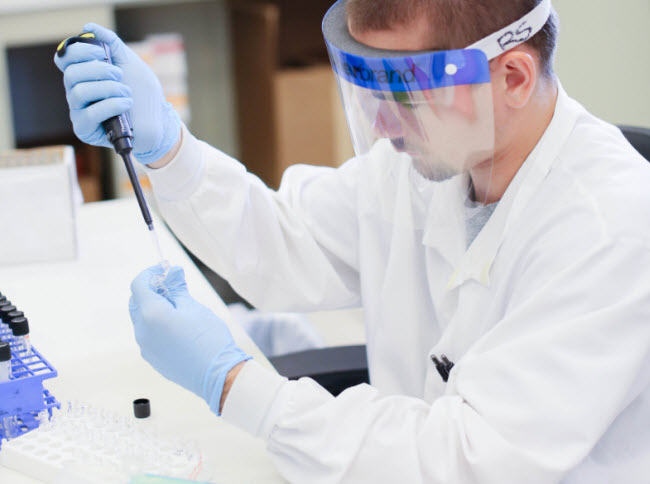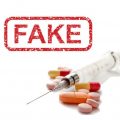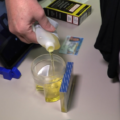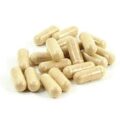What are Synthetic Drugs?
Synthetic drugs are chemical compounds produced in a laboratory. They can be produced commercially by drug manufacturers for valid medical purposes and are diverted from legal channels or produced illegally in clandestine laboratories for illicit markets worldwide. When produced clandestinely, synthetic drugs aim to mimic or even enhance the effects of natural illicit drugs, such as marijuana. According to U.S. Customs and Border Protection, many synthetic drugs originate overseas. Synthetic drugs could be addictive and pose a serious threat to the health of everyday individuals. Nevertheless, it is difficult for regulatory agencies to control or monitor synthetic drugs. Manufacturers often slightly modify the molecular structures of illegal or controlled substances to circumvent existing drug laws or labeled “not for human consumption” to mask their intended purpose and avoid Food and Drug Administration (FDA) regulatory oversight of the manufacturing process.
Easy access, low prices, and a misconception that synthetic drugs are “natural”, and harmless have likely contributed to synthetic drug abuse. Another contributing factor is the ability for synthetic drugs to circumvent standard drug tests that cannot easily detect many of the chemicals in the drug.
Some drugs are natural, meaning that the plants from which they are derived exist in nature without any help from humankind: opium poppies (heroin, morphine, codeine), coca leaves (cocaine), psilocybin mushrooms (shrooms), and marijuana. Other drugs are synthetic, which means they are created using man-made chemicals, not natural ingredients. For example, K2 (also known as Spice), Ecstasy (also known as Molly), and bath salts are all types of synthetic drugs. Since synthetic drugs are created in illegal labs to bypass regulations prohibiting controlled substances, their strength, composition, and ingredients are unknown to the consumer. Fun names and colorful appearances can sometimes mask their extreme potential for harm, but make no mistake about it: synthetic drugs are extremely dangerous and can cause addiction, severe health issues, and even death.
Types of Synthetic Drug
Sneaky Synthetics
The term “designer drug” refers to a substance designed in a laboratory to mimic the pharmacological effects of a controlled drug. Manufacturers create these drugs with slightly altered molecular structures in order to avoid having them classified as illicit drugs. The broad term applies to almost every synthetic drug, but it is typically used to refer to synthetic recreational drugs. New designer drugs frequently enter the market. In fact, between 2009 and 2014, between 200 and 300 new designer drugs were identified. Most of these were manufactured in China (source). Many designer drugs are sold over the Internet or in certain stores, and they are often labeled as herbal smoking blends, plant food, jewelry cleaner, or bath salts. To protect the public and stay on top of the ever-changing market, the Drug Enforcement Administration (DEA) monitors the online sale of synthetic drugs (source). examples of synthetic drugs include;
Synthetic Marijuana
Like many types of synthetic drugs, synthetic marijuana goes by many names: K2, Spice, fake pot, potpourri, legal weed, and more. It consists of active ingredients sprayed onto dried plant material and chopped herbs. Unlike marijuana, which contains THC, synthetic marijuana incorporates synthetic cannabinoids to replicate THC’s effects. As there are over 120 known chemical forms of synthetic cannabinoids, the drug can change drastically from batch to batch. In addition, because synthetic marijuana is often falsely advertised as “safe” and “natural,” many users mistakenly assume it is no more dangerous than natural marijuana (source). To learn more about synthetic marijuana, please check out this previous blog post.
Synthetic Stimulants
Synthetic stimulants (which contain synthetic cathinones) aim to stimulate the effects of cocaine and hallucinogenic drugs. Two common examples are bath salts and ecstasy (also known as MDMA or Molly). These psychoactive drugs can produce many adverse effects, including addiction, paranoia, rapid heartbeat, panic attacks, hallucinations, and even death.
Synthetic LSD
Synthetic LSD, also known as N-Bomb or Smiles, is a phenethylamine (PEA) intended to mimic the effects of lysergic acid diethylamide (LSD). It can cause hallucinations and paranoia, much like LSD. The following are the chemical names of N-Bomb:
Synthetic PCP
Methoxamine (often shortened to MXE) is a synthetic compound and dissociative drug that mimics the effects of phencyclidine (PCP) or Angel dust. It can cause delusions, psychosis, and a feeling of detachment from reality.
Effects and Testing
Synthetic drugs can produce a number of harmful effects, including anxiety, aggressiveness, paranoia, seizures, loss of consciousness, nausea, violence, vomiting, coma, and even death. Plus, as manufacturers develop new chemicals to evade existing laws, consumers have no way of knowing what the drugs they take contain. Small modifications can produce major effects, often endangering the lives of experimenting users. The Food and Drug Administration has approved neither the products nor their active ingredients (source).
To prevent synthetic drug abuse in the workplace, employers are encouraged to create a drug-free workplace policy and regularly test employees.
Public Health Perspective
Synthetic drugs can have severe, adverse effects on health, a high potential for addiction and abuse, and can be potentially life-threatening. According to the Centers for Disease Control and Prevention, 15 people in the U.S died from synthetic drugs in the first half of 2015—three times as many as the same period in 2014. American Association of Poison Control Centers also indicated there were about 1,000 reports of synthetic drugs related hospitalizations in April 2015 alone; it was more than double the total number of cases seen in the first three months of 2015 and nearly four times the total recorded by this time last year. SEE: What Is Behavior Modification?
Health Effects
For synthetic cannabinoids, the effects include severe agitation and anxiety, nausea, vomiting, tachycardia (fast, racing heartbeat), elevated blood pressure, tremors and seizures, hallucinations, dilated pupils, and suicidal and other harmful thoughts and/or actions.
For synthetic stimulants, the effects include increased heart rate and blood pressure, chest pain, extreme paranoia, hallucinations, delusions, and violent behavior, which causes users to harm themselves or others.
For MDMA, the effects include severe hyperthermia, dehydration, long-term learning impairment, nausea, chills, sweating, involuntary jaw clenching and teeth grinding, muscle cramping, blurred vision, high blood pressure, heart failure, and arrhythmia.
Easy Access for Youth
The Drug Enforcement Administration (DEA) has indicated that the primary users of these synthetic drugs are youth. This is because products are cheap and easily accessible to teenagers online or in gas stations, and at convenience stores, smoke shops, and head shops. Synthetic cannabinoids are often sold as herbal incense in convenience stores, tobacco shops, or head shops. MDMA is usually sold in nightclubs and at all-night dance parties (“raves”). It commonly comes in capsule or tablet form but can also be crystalline powder or liquid form.





